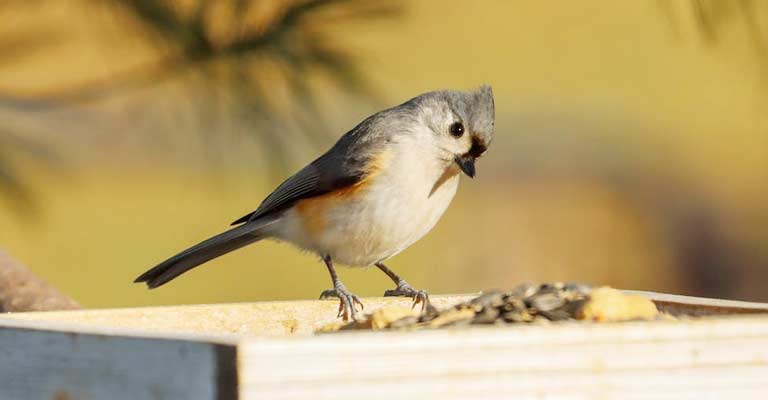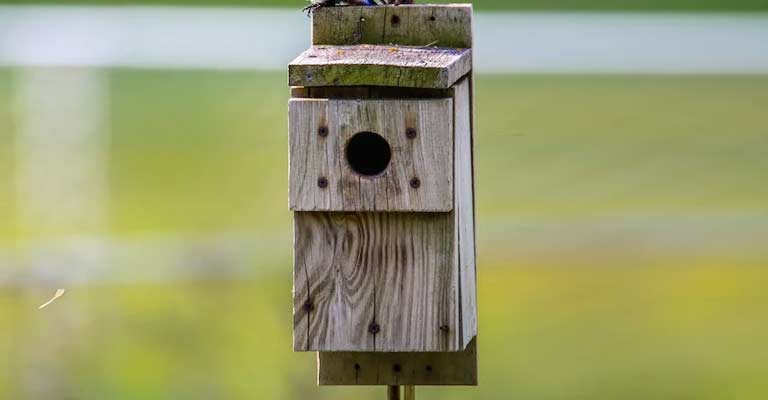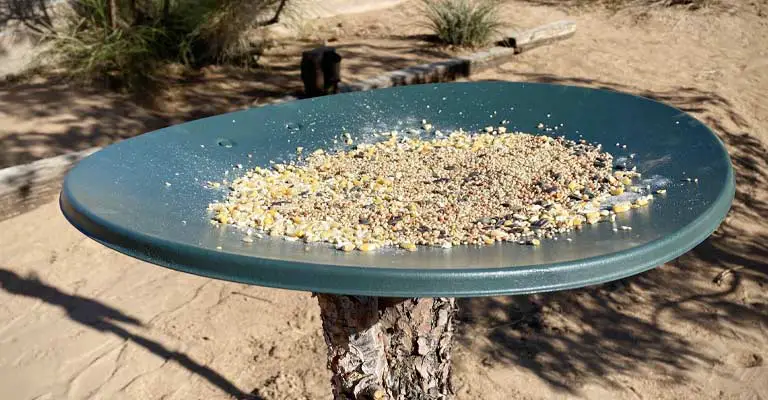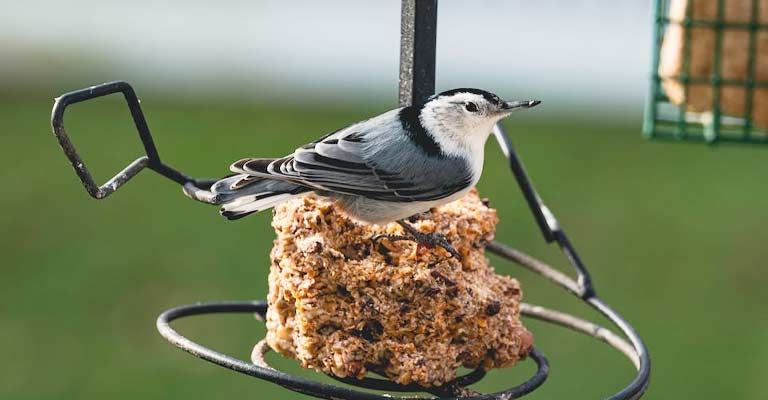In the enchanting world of birdwatching, attracting feathered friends to your backyard does not require relying solely on traditional feeders.
Embracing a feeder-free approach opens up a realm of creative possibilities, fostering a more natural and sustainable connection with the avian community.
While feeders are a common choice, this exploration delves into diverse alternatives, highlighting methods that cater to the needs of various bird species.
From native plantings to water features and innovative DIY solutions, the pursuit of a feeder-free haven promises a richer, more ecologically balanced environment for both birds and bird enthusiasts.
Discovering how to attract birds without a feeder invites us to appreciate the intricate dance of nature and redefine our role in nurturing the avifauna that graces our surroundings.

How To Attract Birds Without A Feeder?
Attracting birds to your garden can be a rewarding and enjoyable experience, and you don’t necessarily need a feeder to do so. By creating a bird-friendly environment with natural elements, you can entice a variety of feathered friends to visit.
Here are some ways to attract birds without a feeder:
Native Plants
Planting native vegetation provides birds with a familiar and nutritious food source. Native plants offer fruits, seeds, and insects that are well-suited to the local bird population.
Choose a variety of plants that bloom at different times to ensure a continuous supply of food throughout the seasons.
Water Features
Birds are drawn to water for drinking and bathing. Install a bird bath or a small pond to create a welcoming oasis. The sound of running water can be particularly enticing, attracting birds from afar.
Keep the water source clean and regularly refreshed to maintain its appeal.
Nesting Boxes

Providing nesting boxes or birdhouses offers shelter and encourages birds to make your garden their home. Different species have various preferences for nesting sites, so include a variety of boxes to accommodate a diverse range of birds.
Place them in quiet, secure locations to ensure successful nesting.
Rock Piles and Logs
Birds often seek insects for protein, and creating habitats like rock piles and logs can attract insects and, consequently, birds. These natural structures provide hiding spots for insects and act as convenient perches for birds scouting for a meal.
Fruit Trees and Berry Bushes
Planting fruit-bearing trees and berry bushes adds a delectable treat for birds. Species like robins, thrushes, and cedar waxwings are especially fond of berries. These plants not only serve as a food source but also contribute to the overall biodiversity of your garden.
Safe Spaces
Birds prefer environments where they feel secure. Reduce the use of pesticides to maintain a healthy ecosystem and avoid startling birds with sudden noises or movements. Having dense shrubs and trees provides safe spaces for birds to rest, hide, and observe their surroundings.
Provide Grit
Birds require grit for digestion, especially if they consume seeds. Scatter a mix of fine gravel and crushed eggshells on the ground. Birds will pick up these small particles, aiding in the grinding of seeds in their gizzards.
What Is The Best Bird Food To Attract Birds?

Selecting the right bird food is crucial for attracting a diverse array of birds to your backyard. Different species have distinct dietary preferences, so offering a variety of foods ensures a broader range of feathered visitors.
Here are some types of bird food that are known to be highly effective:
Sunflower Seeds
Sunflower seeds are a favorite among many bird species, including cardinals, chickadees, and finches. Choose black oil sunflower seeds for their high oil content and thin shells, making them easily accessible for a wide range of birds.
They are a versatile and energy-rich option that attracts various colorful visitors to your feeders.
Nyjer (Thistle) Seeds
Nyjer seeds are particularly appealing to finches, such as goldfinches and siskins. These small, oil-rich seeds require a specialized feeder with tiny ports to prevent spillage.
Providing Nyjer seeds ensures a reliable food source for finches, especially during the colder months.
Suet
Suet is a high-energy food made from animal fat and mixed with various ingredients like seeds, nuts, and fruit. It’s a popular choice for woodpeckers, nuthatches, and chickadees.
Suet can be offered in dedicated feeders or smeared onto tree bark, providing a nutritious supplement, especially in winter.
Mealworms
An excellent source of protein, mealworms are particularly attractive to insect-eating birds like bluebirds, robins, and wrens. You can offer live or dried mealworms in specialized feeders or scattered on a platform.
They’re especially beneficial during the breeding season when birds need extra protein for their chicks.
Cracked Corn
Cracked corn is a budget-friendly option that appeals to a variety of ground-feeding birds, such as sparrows, doves, and quail. Scatter cracked corn on the ground or offer it in a low tray to attract ground-feeding species.
Keep in mind that it may also attract squirrels and other critters.
Fruit
Many birds enjoy fruit, and offering slices of apples, oranges, or berries can attract species like orioles, thrushes, and mockingbirds. Place fruit on platform feeders or attach it to tree branches.
Ensure you remove any spoiled or uneaten fruit promptly to maintain a clean feeding environment.
Peanuts
Peanuts are a rich source of protein and healthy fats, making them popular among a variety of birds, including woodpeckers, jays, and titmice.
Choose unsalted, dry-roasted peanuts and offer them in mesh feeders or peanut feeders. Whole peanuts in the shell or shelled peanuts can both be appealing options.
What Are Some Alternatives To A Bird Feeder?

While bird feeders are a popular choice for attracting birds, various alternatives can be just as effective in creating a bird-friendly environment. These alternatives offer different approaches to providing food, water, and shelter for our feathered friends.
Here are some alternatives to traditional bird feeders:
Hanging Fruits
Instead of using a feeder, hang slices of fruits like apples or oranges from tree branches. Many birds, including orioles and thrushes, are attracted to the vibrant colors and natural sweetness of fresh fruit.
This method provides a nutritious and visually appealing option without the need for a conventional feeder.
Ground Feeding Station
Create a designated ground feeding area by scattering birdseed directly on the ground. This attracts ground-feeding birds like sparrows, doves, and towhees.
Keep the area clear of debris and refill it regularly to maintain a clean and inviting space for birds to forage.
Insect-Friendly Garden
Attract insect-loving birds by cultivating a garden that supports a variety of insects. This includes planting flowers, shrubs, and grasses that attract insects, subsequently drawing birds like warblers, flycatchers, and wrens.
An insect-friendly garden provides a natural and sustainable food source.
Water Misters or Drippers
Birds are attracted to the sound and movement of water. Install a water mister or dripper in your garden to create a small, dripping water source. This not only provides birds with a drinking spot but also an area for bathing, which is crucial for their health and hygiene.
Peanut Garland
String unsalted peanuts (in or out of the shell) onto a sturdy twine to create a peanut garland. Hang this in your yard, and birds like woodpeckers, jays, and chickadees will be enticed to peck at the peanuts.
It adds an element of natural foraging behavior to their feeding routine.
Native Berry Bushes
Instead of relying solely on bird feeders, plant native berry-producing bushes like elderberry or serviceberry. These bushes provide a natural and sustainable food source, attracting a variety of birds, including thrushes, grosbeaks, and waxwings, throughout the year.
Gourd or Pine Cone Feeders
Create DIY feeders using hollowed-out gourds or pine cones. Fill the crevices with a mixture of peanut butter and birdseed, then hang them from tree branches.
Birds such as nuthatches and titmice will be drawn to these creative and eco-friendly alternatives.
By incorporating these alternatives, you can diversify your bird-friendly offerings, providing food, water, and shelter in ways that mimic natural conditions.
Each option adds a unique element to the birdwatching experience, fostering a healthier and more dynamic backyard habitat.
FAQs
What are some alternative food sources for birds?
Birds can be enticed by hanging fruits, peanut garlands, or even a ground feeding station with scattered seeds. Creating an insect-friendly garden also attracts insect-eating birds, offering a sustainable and diverse menu.
Can I attract birds without specialized bird food?
Absolutely! Birds are drawn to a variety of natural foods like fruits, insects, and seeds. By cultivating a diverse garden, you can provide a buffet that caters to different bird species.
How do water features contribute to bird attraction?
Birds are attracted to the sound and movement of water. Installing water misters or drippers creates a drinking and bathing spot, enhancing your garden’s appeal to a wide range of avian visitors.
What DIY alternatives can I use to attract birds?
Explore creative options like peanut garlands, gourd or pine cone feeders filled with peanut butter and seed mixtures. These DIY solutions add a personal touch while enticing birds to your outdoor space.
Are there specific plants that attract birds without a feeder?
Yes, native plants like elderberry, serviceberry, and other berry-producing bushes provide natural food sources. By incorporating these into your landscape, you create a sustainable habitat that draws in a variety of bird species throughout the year.
Conclusion
In steering away from conventional bird feeders, we embark on a journey to harmonize our spaces with the innate rhythms of birdlife. The alternatives explored in this pursuit offer a tapestry of nourishment, shelter, and natural allure.
By embracing methods such as native plantings, water features, and inventive feeders, we not only attract a diverse array of birds but also contribute to the vitality of our ecosystems.
As we witness the colorful ballet of birds in our feeder-free sanctuaries, we find fulfillment in knowing that our efforts have fostered a sustainable haven where the beauty of nature unfolds unhindered.
The quest to attract birds without a feeder becomes a celebration of interconnectedness, enriching our lives and the lives of our avian companions.